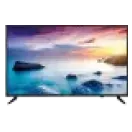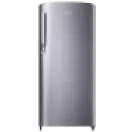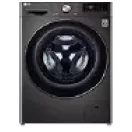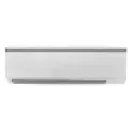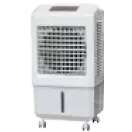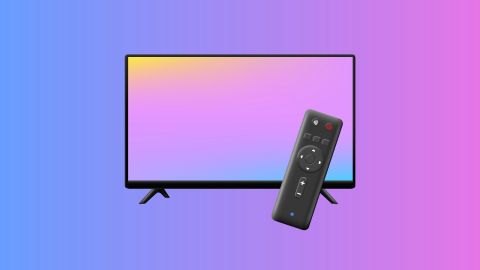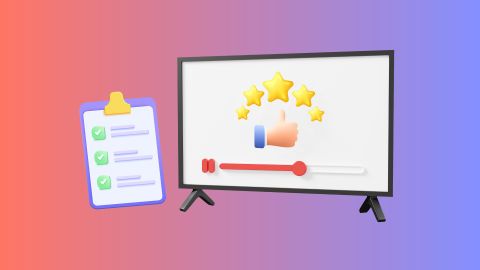Buy the perfect air conditioner without worrying about the costs. Simply browse through a wide selection of ACs on Bajaj Mall, visit any of Bajaj Finserv’s 1.5 lakh partner stores in 4,000 cities, select your preferred model, and make your purchase budget-friendly with Easy EMIs and zero down payment options on select models. Check your loan eligibility and convert the cost of your new AC into Easy EMIs.
3 min
29-Apr-2025
Maintaining a comfortable temperature throughout an entire home can be a significant challenge, especially during peak summer months. Central AC systems offer a powerful and consistent solution to this problem, providing uniform cooling across all living spaces. For homeowners seeking a comprehensive and effective way to manage their indoor climate, understanding the capabilities and benefits of a central AC is the first step towards a cooler, more comfortable home.
Buy the perfect air conditioner without worrying about the costs. Simply browse through a wide selection of ACs on Bajaj Mall, visit any of Bajaj Finserv’s 1.5 lakh partner stores in 4,000 cities, select your preferred model, and make your purchase budget-friendly with Easy EMIs and zero down payment options on select models. Check your loan eligibility and convert the cost of your new AC into Easy EMIs.
Buy the perfect air conditioner without worrying about the costs. Simply browse through a wide selection of ACs on Bajaj Mall, visit any of Bajaj Finserv’s 1.5 lakh partner stores in 4,000 cities, select your preferred model, and make your purchase budget-friendly with Easy EMIs and zero down payment options on select models. Check your loan eligibility and convert the cost of your new AC into Easy EMIs.
What are central ACs?
A central AC, or central air conditioning system, is a comprehensive cooling solution designed to distribute cool air throughout an entire building or home from a single, centralised unit. Unlike individual room air conditioner units, a central system uses a network of ducts to deliver conditioned air to different areas and return warm air back to the unit for cooling. Knowing this distinction is beneficial as it highlights the key advantage of uniform cooling across all spaces, eliminating temperature variations between rooms. This also often leads to a more streamlined and less visually obtrusive cooling setup compared to multiple individual units. Understanding how a central AC works and its components can help you appreciate its value as a whole-house cooling solution.
Split-System Central AC: This is the most common type, with an outdoor unit containing the compressor and condenser, and an indoor unit (air handler) containing the evaporator coil and blower fan. The two units are connected by refrigerant lines and electrical wiring.
Packaged Central AC: In this type, all the components (compressor, condenser, and evaporator) are housed in a single outdoor unit. Conditioned air is then ducted into the home. Packaged units are often used for smaller commercial buildings or in residential settings where there isn't enough space for a separate indoor unit.
Heat Pump Central AC: A heat pump can both heat and cool a home. In the summer, it operates like a central AC, extracting heat from the indoor air and releasing it outdoors. In the winter, it reverses the process. Heat pumps can be a cost-effective option for year-round climate control, especially in moderate climates.
Ductless Mini-Split Central AC: While technically a form of split system, these systems can sometimes be used to cool multiple zones without the need for extensive ductwork. Each indoor unit cools a specific area and is connected to an outdoor unit. This might be an option for homes without existing ductwork.
Understanding these types, including the more involved installation of a ducted AC, will help you choose the right system for your needs.
Consistent cooling: Provides uniform temperature throughout the entire house, eliminating hot and cold spots.
Improved air quality: Many central AC systems can be integrated with air filters and purifiers to remove dust, pollen, and other airborne particles, leading to better indoor air quality. This makes it the best AC for summers and year-round comfort.
Quiet operation: The main components of a central AC are typically located outside the living areas, resulting in quieter operation inside the home compared to multiple window units.
Energy efficiency: Modern central AC systems, especially those with high SEER (Seasonal Energy Efficiency Ratio) ratings, can be more energy-efficient for whole-house cooling compared to running multiple individual units.
Increased home value: A centrally air-conditioned home is often more attractive to potential buyers, potentially increasing its resale value.
Convenience: A single thermostat controls the temperature for the entire house, offering greater convenience than adjusting multiple units.
Square footage: The size of your home is a primary factor. A general rule of thumb is that you might need one ton of cooling for every 400 to 600 square feet, but this can vary.
Climate: Warmer climates will require more cooling capacity than milder ones.
Insulation: Good insulation helps keep cool air inside and warm air out, reducing the required AC size.
Windows: The number and size of windows, as well as their direction (south-facing windows receive more direct sunlight), can impact cooling needs. Energy-efficient windows can help reduce the load on your Samsung AC or any other brand.
Ceiling height: Higher ceilings mean a larger volume of air to cool.
Number of occupants: More people generate more heat.
Heat-generating appliances: Appliances like ovens and computers can add to the cooling load.
It is highly recommended to consult with a qualified HVAC (heating, ventilation, and air conditioning) professional to perform a load calculation (often referred to as Manual J calculation) to accurately determine the appropriate size central AC unit for your specific home. This ensures optimal comfort and energy efficiency.
Cooling capacity (tonnage): As discussed earlier, choosing the correct size is crucial for performance and efficiency.
Energy efficiency (SEER rating): A higher SEER rating indicates greater energy efficiency, leading to lower electricity bills over the lifespan of the unit. Consider long-term savings when evaluating the central AC price.
Type of system: Decide whether a split-system, packaged unit, or heat pump is the best fit for your home and climate.
Brand reputation and reliability: Research different brands and read reviews to choose a reputable and reliable manufacturer.
Features: Consider features like multi-stage cooling, zoning capabilities (allowing you to cool different areas of your home independently), smart thermostats, and air filtration options.
Installation costs: Get quotes from multiple qualified HVAC contractors for installation. Ensure they are licensed and experienced in installing central AC systems.
Maintenance requirements: Understand the regular maintenance needed to keep your system running efficiently and extend its lifespan.
Warranty: Check the manufacturer's warranty on the unit and the installer's warranty on their work.
Noise level: Consider the sound rating of the outdoor unit, especially if it will be located near living areas or neighbours.
Budget: Determine your budget, considering both the initial purchase price and the long-term operating costs (energy bills and maintenance).
Disclaimer: The features, availability, and pricing of each model are subject to change and may vary. For the most accurate and up to date information, please visit the official website.
How do central ACs work?
A central AC system operates on a fundamental principle of refrigeration. Here is a simplified breakdown:- Refrigerant Cycle: The system uses a refrigerant, a chemical compound that easily changes between liquid and gaseous states, to absorb and release heat.
- Compressor: This component circulates the refrigerant and increases its pressure and temperature.
- Condenser: Located in the outdoor unit, the condenser releases the absorbed heat from the refrigerant to the outside air, turning the refrigerant back into a liquid.
- Expansion Valve: The liquid refrigerant then passes through an expansion valve, which reduces its pressure and temperature.
- Evaporator Coil: Located in the indoor unit, the cold, low-pressure refrigerant absorbs heat from the warm air that is blown over it by a fan. This cools the air.
- Air Distribution: The cooled air is then forced through a network of ducts that lead to vents in different rooms of the house.
- Return Air: Warm air from the house is drawn back into the indoor unit through return ducts, where it passes over the evaporator coil to be cooled again, repeating the cycle.
Types of central air conditioners
When considering a central AC system, it is important to know the different types available:Split-System Central AC: This is the most common type, with an outdoor unit containing the compressor and condenser, and an indoor unit (air handler) containing the evaporator coil and blower fan. The two units are connected by refrigerant lines and electrical wiring.
Packaged Central AC: In this type, all the components (compressor, condenser, and evaporator) are housed in a single outdoor unit. Conditioned air is then ducted into the home. Packaged units are often used for smaller commercial buildings or in residential settings where there isn't enough space for a separate indoor unit.
Heat Pump Central AC: A heat pump can both heat and cool a home. In the summer, it operates like a central AC, extracting heat from the indoor air and releasing it outdoors. In the winter, it reverses the process. Heat pumps can be a cost-effective option for year-round climate control, especially in moderate climates.
Ductless Mini-Split Central AC: While technically a form of split system, these systems can sometimes be used to cool multiple zones without the need for extensive ductwork. Each indoor unit cools a specific area and is connected to an outdoor unit. This might be an option for homes without existing ductwork.
Understanding these types, including the more involved installation of a ducted AC, will help you choose the right system for your needs.
Benefits of a central AC system
Investing in a central AC system offers several advantages for homeowners:Consistent cooling: Provides uniform temperature throughout the entire house, eliminating hot and cold spots.
Improved air quality: Many central AC systems can be integrated with air filters and purifiers to remove dust, pollen, and other airborne particles, leading to better indoor air quality. This makes it the best AC for summers and year-round comfort.
Quiet operation: The main components of a central AC are typically located outside the living areas, resulting in quieter operation inside the home compared to multiple window units.
Energy efficiency: Modern central AC systems, especially those with high SEER (Seasonal Energy Efficiency Ratio) ratings, can be more energy-efficient for whole-house cooling compared to running multiple individual units.
Increased home value: A centrally air-conditioned home is often more attractive to potential buyers, potentially increasing its resale value.
Convenience: A single thermostat controls the temperature for the entire house, offering greater convenience than adjusting multiple units.
What size central AC unit do I need for my home?
Determining the correct size central AC unit for your home is crucial for optimal performance and energy efficiency. An undersized unit will struggle to cool your home adequately, while an oversized unit can lead to short cycling (frequent on/off cycles), which is inefficient and can reduce the lifespan of the system. Several factors influence the required cooling capacity, typically measured in tons (where one ton equals 12,000 BTUs per hour):Square footage: The size of your home is a primary factor. A general rule of thumb is that you might need one ton of cooling for every 400 to 600 square feet, but this can vary.
Climate: Warmer climates will require more cooling capacity than milder ones.
Insulation: Good insulation helps keep cool air inside and warm air out, reducing the required AC size.
Windows: The number and size of windows, as well as their direction (south-facing windows receive more direct sunlight), can impact cooling needs. Energy-efficient windows can help reduce the load on your Samsung AC or any other brand.
Ceiling height: Higher ceilings mean a larger volume of air to cool.
Number of occupants: More people generate more heat.
Heat-generating appliances: Appliances like ovens and computers can add to the cooling load.
It is highly recommended to consult with a qualified HVAC (heating, ventilation, and air conditioning) professional to perform a load calculation (often referred to as Manual J calculation) to accurately determine the appropriate size central AC unit for your specific home. This ensures optimal comfort and energy efficiency.
Things to Consider While Choosing a Central Air Conditioner
Selecting the right central air conditioner involves careful consideration of several factors to ensure you get a system that meets your needs and budget:Cooling capacity (tonnage): As discussed earlier, choosing the correct size is crucial for performance and efficiency.
Energy efficiency (SEER rating): A higher SEER rating indicates greater energy efficiency, leading to lower electricity bills over the lifespan of the unit. Consider long-term savings when evaluating the central AC price.
Type of system: Decide whether a split-system, packaged unit, or heat pump is the best fit for your home and climate.
Brand reputation and reliability: Research different brands and read reviews to choose a reputable and reliable manufacturer.
Features: Consider features like multi-stage cooling, zoning capabilities (allowing you to cool different areas of your home independently), smart thermostats, and air filtration options.
Installation costs: Get quotes from multiple qualified HVAC contractors for installation. Ensure they are licensed and experienced in installing central AC systems.
Maintenance requirements: Understand the regular maintenance needed to keep your system running efficiently and extend its lifespan.
Warranty: Check the manufacturer's warranty on the unit and the installer's warranty on their work.
Noise level: Consider the sound rating of the outdoor unit, especially if it will be located near living areas or neighbours.
Budget: Determine your budget, considering both the initial purchase price and the long-term operating costs (energy bills and maintenance).
Disclaimer: The features, availability, and pricing of each model are subject to change and may vary. For the most accurate and up to date information, please visit the official website.
Explore ACs on EMI with Bajaj Finserv
For those seeking a dependable and efficient AC, you can explore a versatile range of models on Bajaj Mall. Once you have reviewed all the product details, simply visit your nearest Bajaj Finserv partner store to select your preferred model. With financing options from Bajaj Finserv, you can easily purchase your favourite products without worrying about the budget. Additionally, you have the flexibility to choose a convenient repayment tenure, allowing you to settle the cost in affordable Easy EMIs. Bajaj Finserv also offers financing solutions on electronics.Advantages of shopping using Bajaj Finserv’s financing options
- Affordable pricing: Get an air conditioner at a budget-friendly price from any Bajaj Finserv partner store, making your finances easier.
- Easy EMIs: Purchase an AC with flexible repayment plans and spread the cost over convenient Easy EMIs.
- Zero down payment: Select ACs come with a zero down payment option, allowing you to buy without any upfront costs.
- Wide range and accessibility: Browse through a vast collection of air conditioners available across various Bajaj Finserv partner stores.
- Complimentary home delivery: Get free home delivery on select ACs, adding to the convenience of your shopping experience.
Air conditioners
ACs by capacity
ACs by budget
ACs by star rating
AC comparison
AC buying guide
Bajaj Finserv App for all your financial needs and goals
Trusted by 50 million+ customers in India, Bajaj Finserv App is a one-stop solution for all your financial needs and goals.
You can use the Bajaj Finserv App to:
Apply for loans online, such as Instant Personal Loan, Home Loan, Business Loan, Gold Loan, and more.
You can use the Bajaj Finserv App to:
Apply for loans online, such as Instant Personal Loan, Home Loan, Business Loan, Gold Loan, and more.
- Explore and apply for co-branded credit cards online.
- Invest in fixed deposits and mutual funds on the app.
- Choose from multiple insurance for your health, motor and even pocket insurance, from various insurance providers.
- Pay and manage your bills and recharges using the BBPS platform. Use Bajaj Pay and Bajaj Wallet for quick and simple money transfers and transactions.
- Apply for Insta EMI Card and get a pre-approved limit on the app. Explore over 1 million products on the app that can be purchased from a partner store on Easy EMIs.
- Shop from over 100+ brand partners that offer a diverse range of products and services.
- Use specialised tools like EMI calculators, SIP Calculators
- Check your credit score, download loan statements, and even get quick customer support—all on the app.
Frequently asked questions
How much does a central AC system cost for a home?
The cost of a central AC system for a home varies widely based on factors like the size of the home, the brand and efficiency (SEER rating) of the unit, and installation complexity. Expect to invest anywhere from Rs. 2 lakh to Rs. 8 lakh or more, including the central AC unit cost and installation.
What is the lifespan of a central AC unit?
A well-maintained central AC unit typically lasts between 15 to 20 years. Factors that can affect its lifespan include the quality of the unit, frequency of maintenance, and the climate in which it operates. Regular servicing can help extend the life of your central AC.
How often should central AC filters be replaced?
Central AC filters should ideally be replaced every 1 to 3 months, especially during peak cooling seasons. Dirty filters reduce airflow and efficiency, making the system work harder. Regular filter replacement ensures optimal performance and good air quality from your central AC.
Is a central AC unit more efficient than split ACs?
Modern central AC units, especially those with high SEER ratings, can be very energy-efficient for whole-house cooling. While individual split ACs might have higher SEER ratings in smaller capacities, a properly sized and efficient central AC can be more cost-effective for cooling an entire home consistently.
Show More
Show Less
